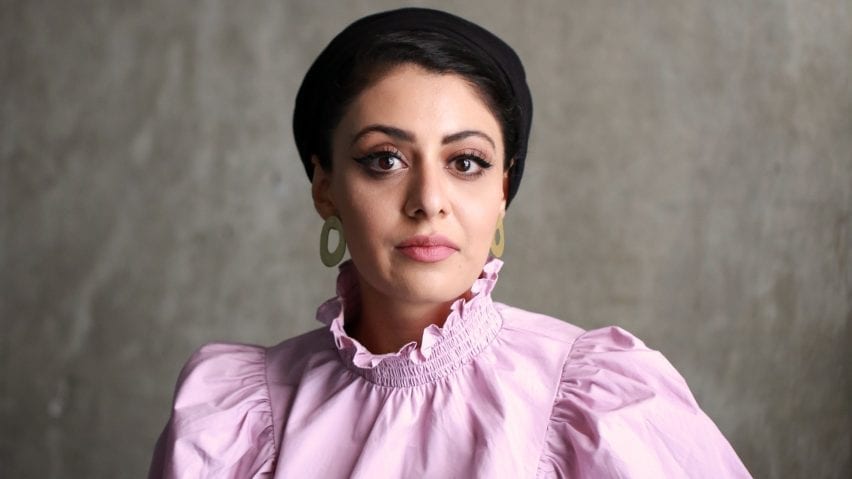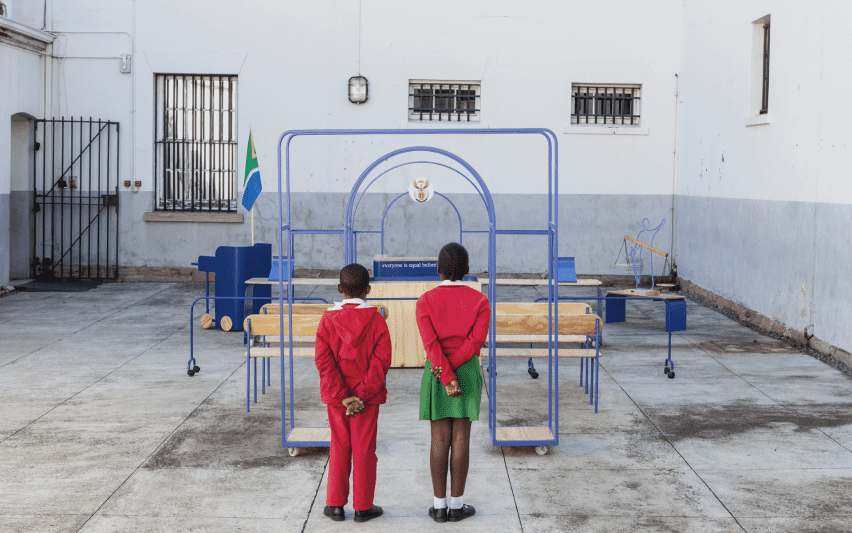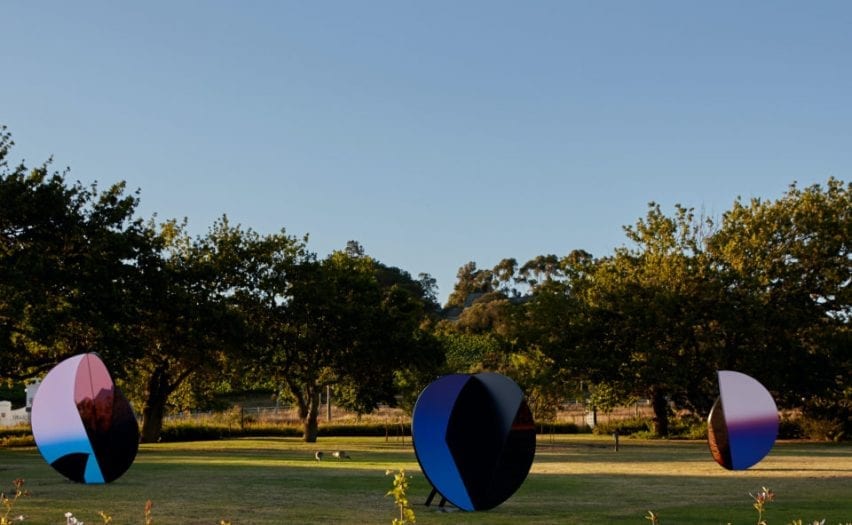"Counterspace was born out of a desire to create a different canon" says Sumayya Vally
In the first of a series of exclusive video interviews with Sumayya Vally, the Serpentine Pavillion 2021 architect says her studio Counterspace was founded out of a desire to create the kind of architecture she felt was missing from her formal education.
Vally, who at 30 was the youngest architect to receive the annual Serpentine Pavilion commission, also spoke about the influence of her hometown of Johannesburg on her work and her plans for the future.
"When I was in my final year of architecture school, myself and my friends spent lots of time in the city, being in Johannesburg, working to read, translate and explore it," Vally said in the video, which Dezeen filmed in London.
"Counterspace was born out of this, I think, out of our own desire to create a different canon and to be able to find what we were missing in our architectural education."

Vally is strongly influenced by her native South Africa and Johannesburg in particular.
Born and raised in apartheid-era Pretoria, Vally later went on to study architecture in Johannesburg and in 2015 founded her own interdisciplinary architectural studio Counterspace in the city.
Her work draws from multiple disciplines, often exploring notions of archive and pedagogy, as well as the importance of community gathering spaces.

"My studio and my practice in general is really working to find design language and design expression for hybrid identity and contested territory," Vally said.
"If I think about these projects in my practice, I can see that many of them are seeds for thinking about the future of architecture differently. And I'm interested in how these experiments can push the discipline of architecture forward both in how we practice architecture, but also in the forms that we have for architecture."
Sumayya Vally's Serpentine Pavilion is open to the public in London until 17 October 2021.
A number of other recent Counterspace projects are featured in the video, including an installation called Children's Courtroom, which aimed to teach kids about the justice system, and the studio's 2019 installation Folded Skies, a series of large mirrors tinted to match the light created by the air pollution in Johannesburg caused by the surrounding mines.
Dezeen will be publishing videos in which Vally discusses those projects in more detail over the coming days.
Below is a transcript of the interview:
"I don't quite know when I decided to become an architect. I think I wanted to be many different things. I remember wanting to be a journalist as well. I wanted to be an archaeologist. I was also really interested in history and in writing. And sometimes when I think about the way that I practice architecture, I think that many of these different interests have found their way into the way that I practice.
"When I was in my final year of architecture school, myself and my friends spent lots of time in the city, being in Johannesburg, working to read and translate and explore it. And Counterspace was born out of this, I think, out of our own desire to create a different canon and to be able to find what we were missing in our architectural education. But also really, I think, to be able to hold the energy that we had, and our interest in the city. I certainly was worried that I'd go into practice and become jaded. And so Counterspace was almost born as a resistance to that.

"My studio and my practice in general is really working to find design language and design expression for hybrid identity and contested territory, and I'm really interested in working to find form for the phenomena that I find and see in Johannesburg.
"If I think about these projects in my practice, I can see that many of them are seeds for thinking about the future of architecture differently. And I'm interested in how these experiments can push the discipline of architecture forward both in how we practice architecture but also in the forms that we have for architecture."

"So my hope is that I get to work on many more cultural projects, on projects that are concerned with our narratives and with manifesting our identities and who we are. So I'm really interested in working on museum projects and working on schools and libraries, and cultural institutions.
"But I'm interested really in understanding how we can reconfigure these so that we bring about difference. But I also hope that I'm still able to practice in the small ways that I presently do and that my firm is always involved in research practice. And really in working on small, quick experimental projects that test out big ideas."